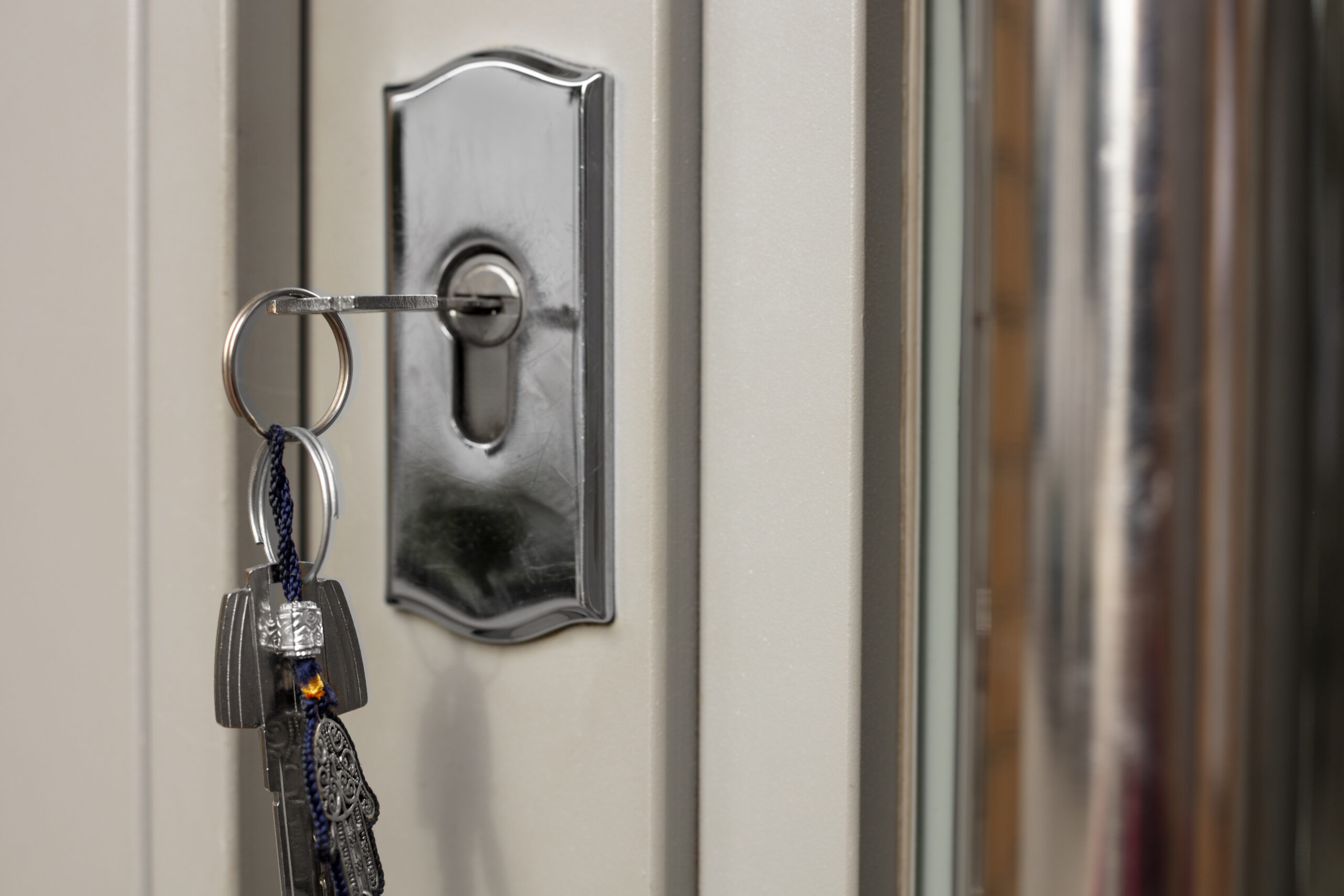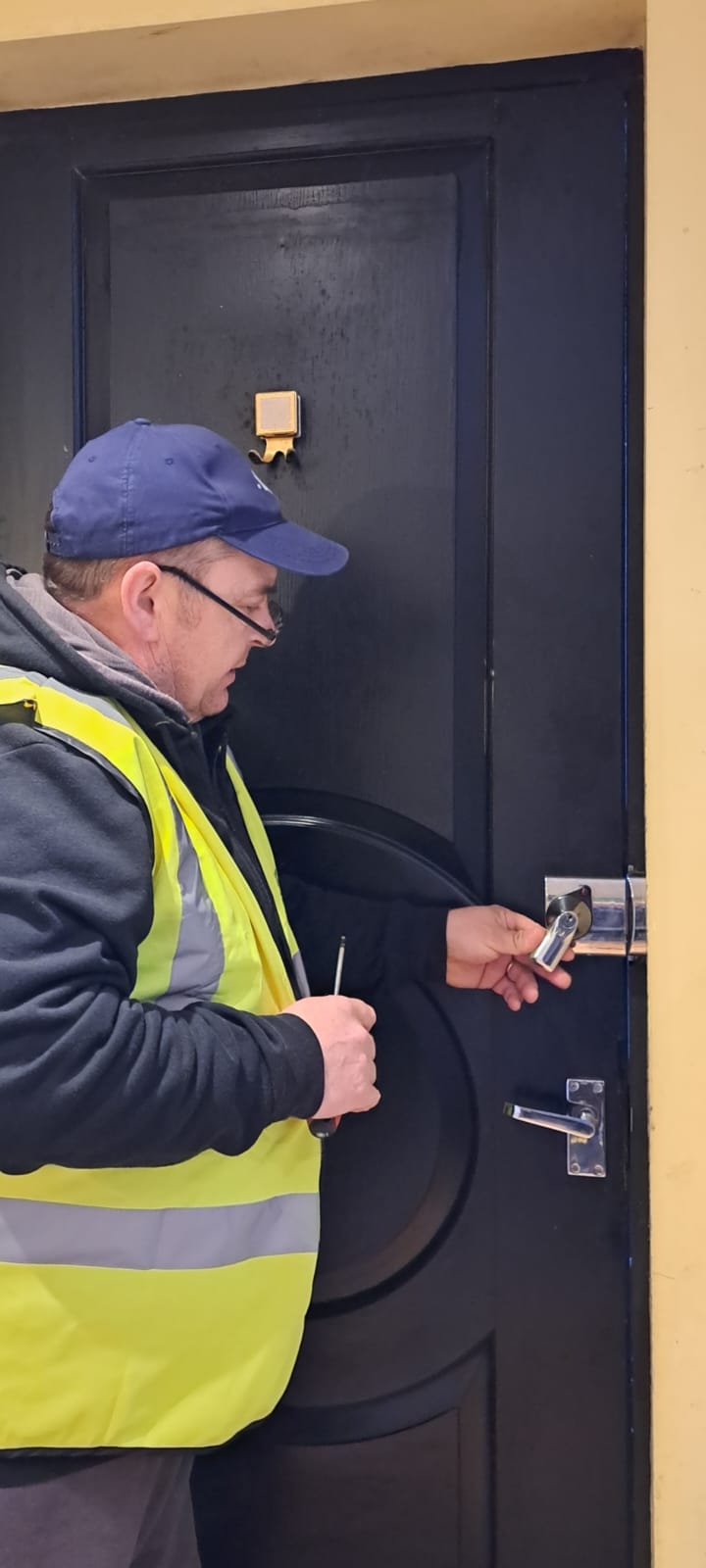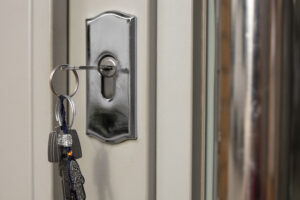| 5 Things to Try When Your Door Handle Won’t Lift Up to Lock or Go Down! |
A door handle that won’t lift to lock or push down to open is not just frustrating. It’s also a safety risk that needs to be addressed right away. If you’re a home or business owner faced with this problem, you might think your only resort is to call a local locksmith. But not so fast! Here are the five most effective things to try when your door handle won’t lift up or lock to go down.
1. Check for Door Misalignment
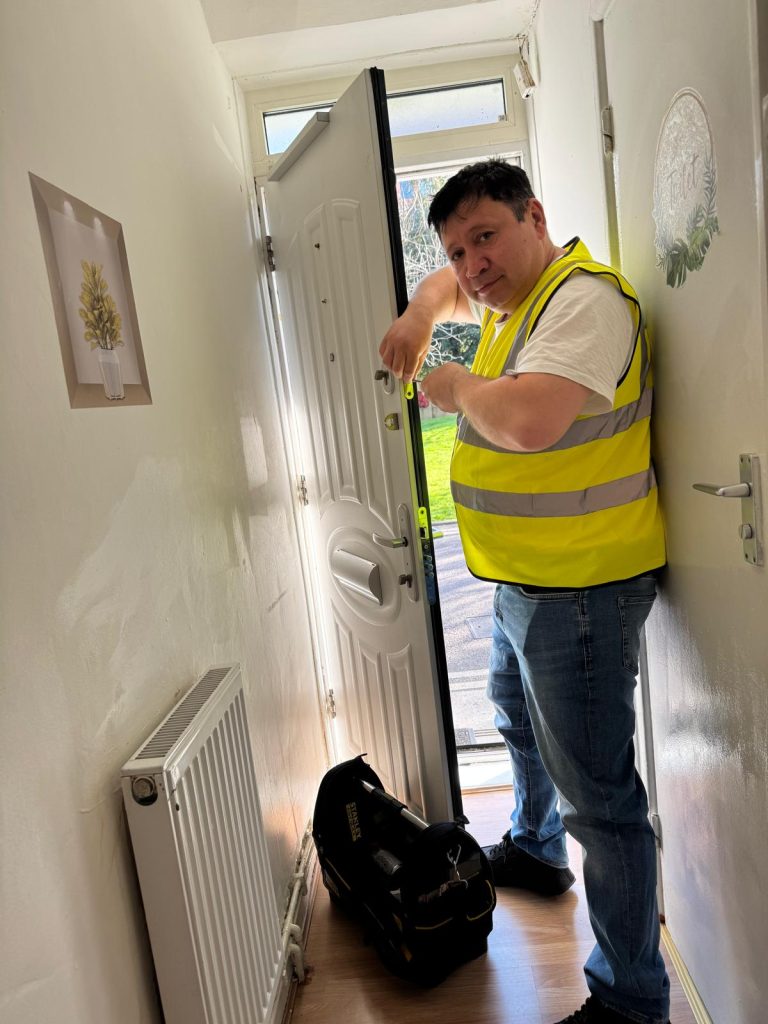
Door misalignment is the number one cause of handle problems, especially on uPVC and composite doors that use multipoint locking systems. Over time, doors can sag, swell, or shift due to weather, heavy use, or even settlement of the building foundation.
Signs of Misalignment
Here are some tell-tale signs that your door is misaligned with the frame.
- The handle works smoothly when the door is open, but jams or feels stiff when closed.
- The gap around the door looks uneven.
- You notice the door is rubbing against the frame.
DIY Steps
Here are a few simple steps to help you align your door with the frame.
Visual Inspection
Stand inside and check the gap between the door and frame. It should be even all around. Look for any spots where the door is tight or dragging.
Test the Handle
With the door open, try lifting or pushing down the handle if it works fine, it’s a good sign that misalignment is the source of your problems.
Adjust Hinges or Strike Plates
Hinges are the metal pieces that attach your door to the frame. Use a screwdriver or Allen key to slightly tighten or loosen the screws. Raise or lower the door as required.
Strike plates, often called keeps, are metal plates on the frame that the locking points fit into. Loosen their screws and adjust their position so the locks align perfectly.
PRO TIP
Small adjustments go a long way. Don’t force the door. Gentle, incremental tweaks are the best way to avoid damaging the frame or mechanism.
2. Lubricate the Mechanism
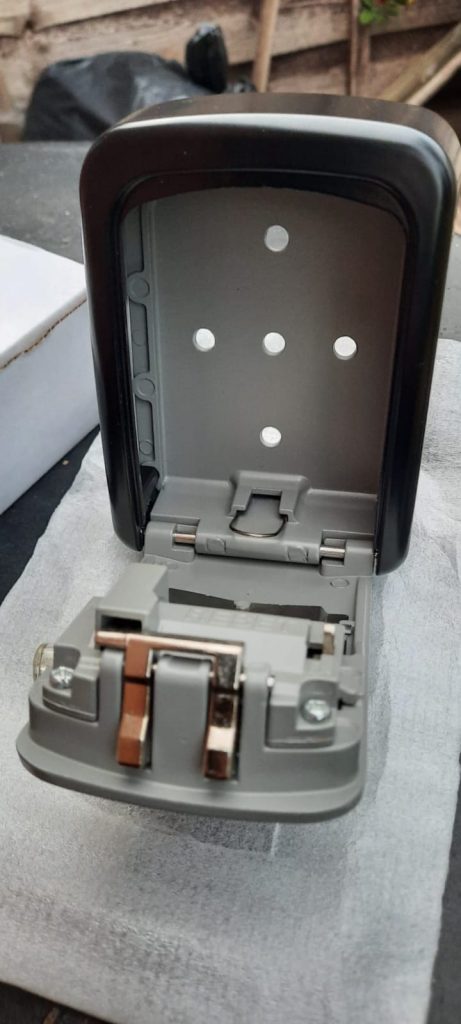
Dirt, dust, and lack of lubrication can gum up the internal parts of your door handle and lock, causing stiffness or, in some cases, total failure.
What to Use
Avoid oil-based sprays like WD-40 for locks. These products can attract dust and exacerbate the issue over time.
Instead, use a graphite powder or a silicone-based spray, which lubricates without leaving sticky residue.
DIY Steps
Here are some actionable tips for lubricating the mechanism.
Remove the Handle Cover
Where possible, remove the handle cover. This approach gives better access to the moving parts.
Apply Lubricant
Spray or puff lubricant into the keyhole, latch, and around the handle spindle (i.e., the metal bar connecting the two sides of the handle).
Operate the Handle
Move the handle up and down several times to work the lubricant through the mechanism.
PRO TIP
If you notice black or gritty residue coming out of the mechanism, believe it or not, that’s a sign that you’re making progress. It’s residue from old lubricant or debris being flushed out.
3. Inspect for Internal Mechanism or Gearbox Failure
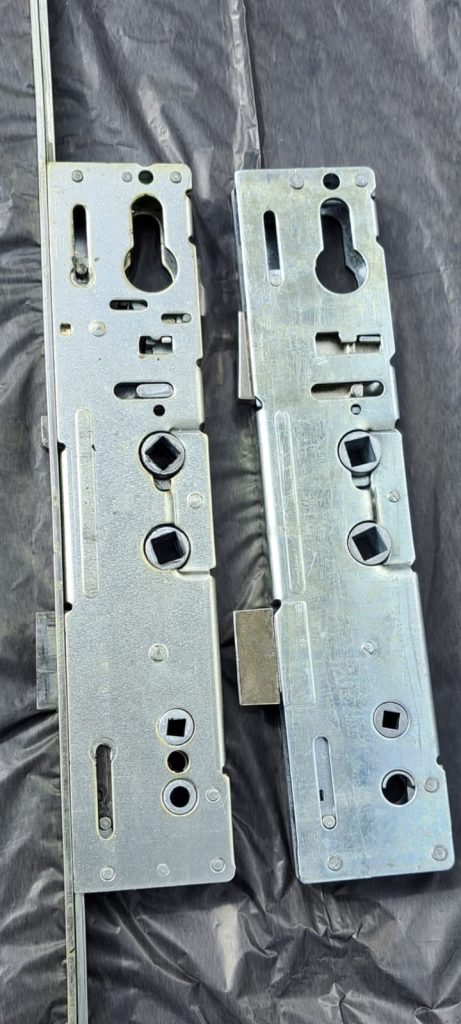
In multipoint locking doors, the gearbox is the central part of the lock mechanism. It connects the handle to the various locking points, such as hooks, bolts, or rollers, that secure the door.
Signs of Gearbox Failure
Here are some sure signs that your door handle is suffering from gearbox failure.
- The handle feels floppy, loose, or doesn’t return to its original position.
- You hear crunching, grinding, or clicking noises when you move the handle.
- The handle won’t move at all, even with the door open.
- The key won’t turn fully or get stuck.
DIY Steps
There are a couple of things you can do to diagnose internal mechanisms or gearbox failure.
Test with the Door Open
If the handle still won’t move, the issue is likely inside the gearbox.
Visual Inspection
Remove the handle and faceplate (the long metal strip running down the edge of the door) to access the gearbox. Look for broken, worn, or jammed parts that are causing the problem.
PRO TIP
Fixing a door gearbox is a complex job, even for someone handy around the home. If you suspect gearbox failure is causing problems with your door handle, note the lock brand and measurements before contacting a locksmith for a replacement. It’s often more cost-effective to replace the gearbox than the entire locking system.
4. Tighten or Replace Loose or Worn Components
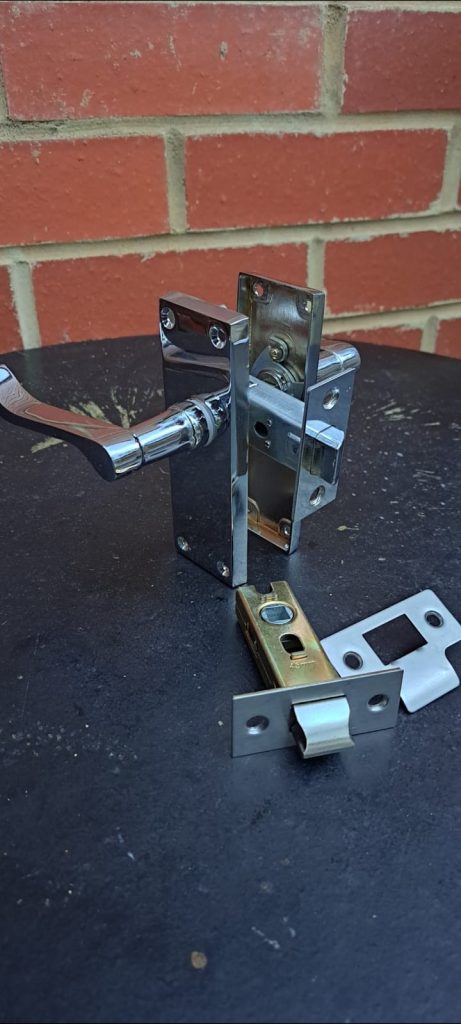
Loose screws or worn-out handles can prevent smooth operation. If you ignore the warning signs, they eventually cause the handle to jam or break.
DIY Steps
Here are a few actionable steps you need to take if you want to tighten or replace troublesome components.
Check All Screws
Use a screwdriver to gently tighten all visible screws on the handle and faceplate. However, be careful not to overtighten the screws, as this can bind the mechanism.
Inspect for Wear
Look for cracks, bends, or excessive play in the handle. If the handle wobbles or feels unstable, it may be beyond a quick DIY fix and instead could need to be replaced.
Replace if Needed
The good news is that handles are relatively inexpensive and easy to swap out. Ensure you buy the correct size and type for your door.
PRO TIP
Always use high-quality replacement parts. Cheap handles or screws have a reputation for failing quickly, which will leave you back at square one.
5. Adjust or Replace the Strike Plate

The strike plate is the metal plate on the door frame that receives the latch or lock bolt. If it’s misaligned, it can block the latch and prevent the handle from moving freely or at all.
DIY Steps
Here’s how to adjust or replace a strike plate that keeps your door handle stationary when you need it to move up or down.
Check Alignment
Close the door slowly and watch where the latch meets the strike plate. If it doesn’t line up or if the latch catches on the plate, you’ll know you need to make some adjustments.
Adjust the Plate
Loosen the screws, move the plate slightly up, down, or sideways, then retighten. Test the handle after each adjustment until it’s sitting right.
Check for Obstructions
Paint, dirt, or swelling can block the latch. If necessary, clean or file the opening so that your handle works as intended.
PRO TIP
If the strike plate is badly worn or bent, you will likely need to replace it. A new plate isn’t expensive, and it can greatly improve handle performance.
When to Call a Professional
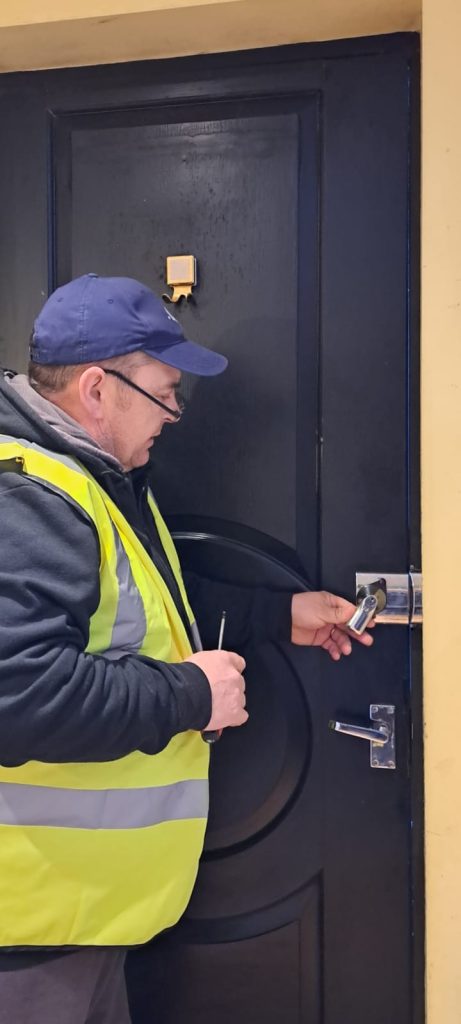
If you’ve tried all five steps and your handle still won’t function properly, the problem may be deeper within the locking mechanism or the door’s structure.
Forcing the handle can cause more damage and lead to costly repairs, so refrain from that approach and call a qualified locksmith instead. These professionals can quickly diagnose and fix your handle and get it back into perfect working order.

